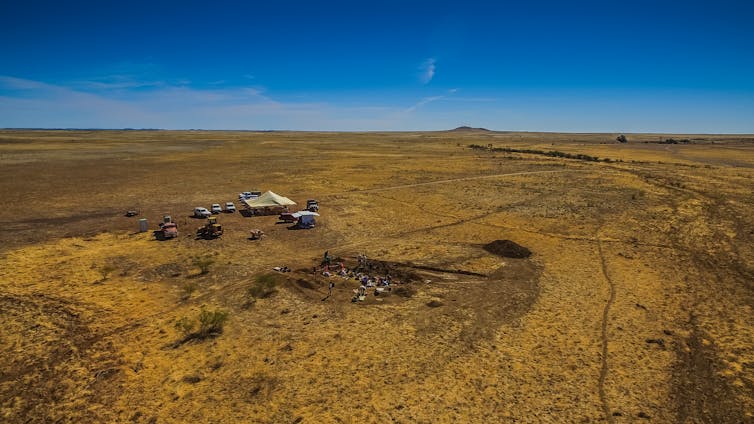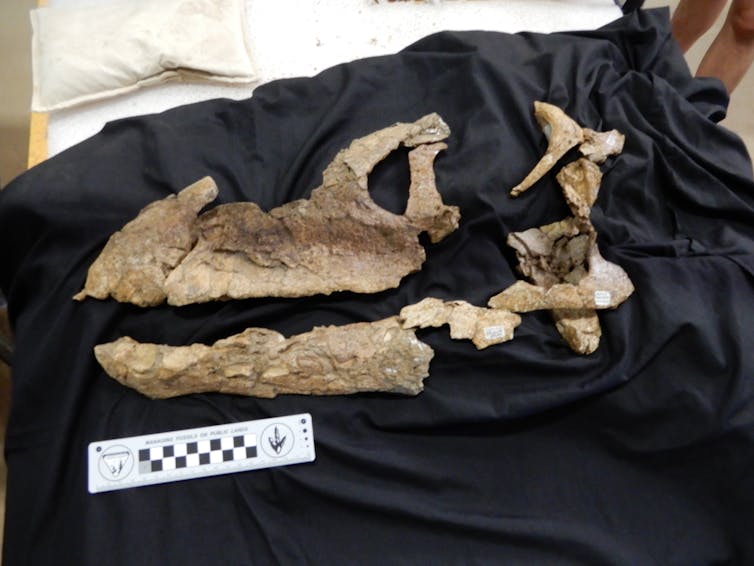CBC
Fri, April 14, 2023

Newfoundland and Labrador Hydro plans to dismantle about 2,400 poles from an out-of-service line between Churchill Falls and Muskrat Falls. It hopes to reuse the wood, even though it's treated with a soon-to-be banned substance. (Patrick Butler/Radio-Canada - image credit)
Newfoundland and Labrador Hydro says it needs to dismantle nearly 2,400 electrical poles and plans to reuse the wood, even though it's been treated with a toxic substance recently banned by Ottawa.
The Crown corporation must decommission a 269-kilometre power line linking Churchill Falls and Muskrat Falls that hasn't been used since 2021, according to environmental assessment documents filed last month.
NL Hydro hopes to keep the poles, despite the fact they are coated with a toxic substance called pentachlorophenol (PCP), for future emergency repairs elsewhere in its transmission system.
Health Canada announced last fall that wood treated with PCP, a material it says presents concerns to humans and the environment, can no longer be used as of next October.
NL Hydro is seeking a "legal remedy" exempting it from the new federal rules and plans to leave the base of each of the 2,372 poles in the ground, meaning thousands of pieces of wood treated with PCP would be permanently embedded in the soil.
"Excavation of the underground segment of the pole could disrupt existing vegetation and increase risk of sedimentation in the area. It is utility practice to cut the pole at the base to avoid any further disturbance around the structures," said Jill Pitcher, a spokesperson for the province's main electricity generator.
Pitcher's emailed statement added that "the potential reuse of some PCP treated materials in the short term will not negatively impact wildlife."
Canadian electrical utilities have used PCP to preserve electricity and telephone pole since the mid-1930s and PCP-treated poles installed prior to next October do not have to be removed or replaced under the new rules.
Striking a balance
Nicolas Reynier, a research scientist at Natural Resources Canada, said in a French interview with Radio-Canada that in an ideal world, each PCP-treated pole on the line would be removed in its entirety, as would the soil surrounding every pole's base. That material would then be sent to a specialized facility that could extract the PCP, as well as highly toxic byproducts known as dioxins and furans.
But such a process, as well as the transportation needed, would be extremely expensive, said Reynier, who studied PCP and soil decontamination for four years at Quebec's Institut national de la recherche scientifique.
In fact, N.L. Hydro's environmental assessment submission, prepared by Stantec Consulting, said it "investigated the alternative of transporting treated wood to an approved recycling facility out-of-province; however, this alternative was cost-prohibitive."
"From the point of view of the life cycle of the pole, these poles have already been treated, they've already been in service for several decades…. Disposing of them in a landfill [without removing the toxic substances] isn't much better environmentally," Reynier said.
"It's not a good idea to reuse these poles that contain PCP, but seeing it's been years or even decades since they were installed, the potential of this substance to make its way into the environment is very low. If there was any pentachlorophenol that could have 'escaped' from the pole, it has already," he said.
Pam Miller, the founder of Alaska Community Action on Toxics, a group fighting for a global ban on PCP, said despite the potential costs, "there should be no exemption given the known environmental and health harms associated with this substance and the fact that there are safe and available alternatives."
"I do think it's problematic to leave PCP-treated wood below ground level as it will continue to leach into surrounding soil and groundwater, potentially exposing wildlife and people to this highly hazardous chemical."
Supply chain concerns
Health Canada's ban on PCP was based on input from officials in Switzerland, New Zealand, and Japan, as well as the European Commission, according to the department's website.
N.L. Hydro said as a member of industry group Electricity Canada it's advocating for "continued use of PCP-treated materials to mitigate short term supply chain risk and potentially reduce landfill waste."
In a statement, Health Canada said it is currently reviewing a submission from Electricity Canada.
"Due to stakeholder concerns, this application is being fast-tracked," wrote spokesperson Nicholas Janveau in an email.
The decommissioning project, whose environmental assessment has only just begun, will take five years, with about 50 kilometres of work completed each year between May and September.
N.L. Hydro says many of the poles will not be reused "due to the age of the infrastructure."



















